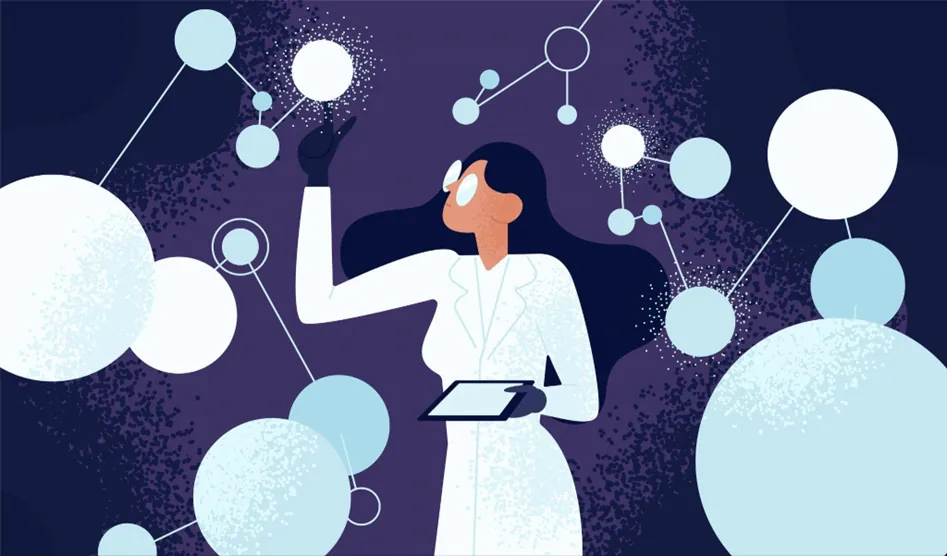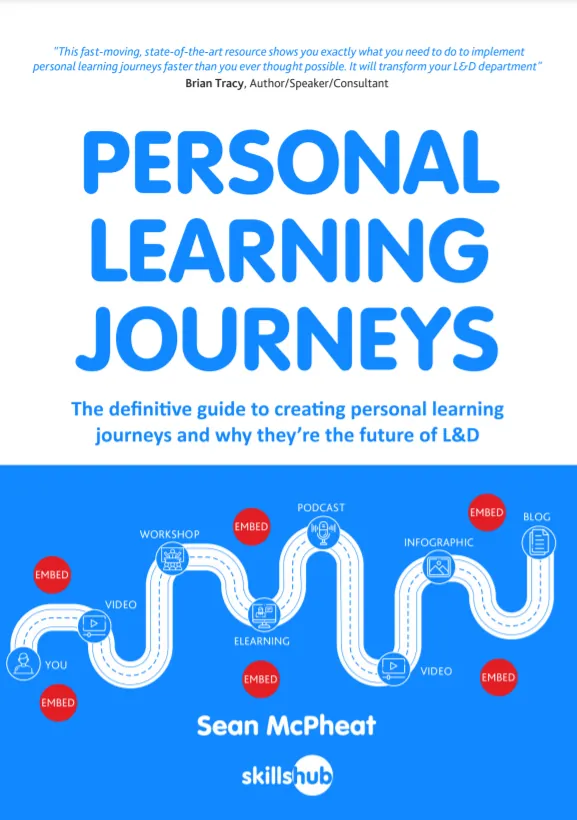
Neuroscience-based e-Learning is rapidly revolutionising how we approach training and development. By harnessing insights from brain science, organisations can create more effective and engaging learning experiences that resonate with learners on a deeper level.
As an innovative e-Learning company, we’re excited to explore how these cutting-edge techniques can transform your training programs, enhancing retention and motivation while catering to the diverse needs of your audience. In this blog post, we’ll discuss the principles of neuroscience and how they can be seamlessly integrated into your e-Learning strategies for maximum impact.

Understanding Neuroscience-Based E-Learning
Before we explore the various ways leaders can utilise neuroscience-based e-Learning, it’s important to have a baseline understanding of what this is and why it matters to your organisation’s success.
What is Neurolearning?
Neurolearning is an approach to education and training that incorporates principles from neuroscience to enhance learning outcomes. It focuses on understanding how the brain processes, retains, and retrieves information, using this knowledge to create more effective teaching methods.
Essential aspects of neurolearning include:
- Brain Function Insights: By understanding how different areas of the brain function during learning, educators can design materials that align with natural cognitive processes, a key aspect of cognitive learning theory. This approach emphasises structuring content in a way that facilitates memory, attention, and understanding, supporting learners in processing and retaining new information more effectively.
- Engagement Techniques: Neurolearning emphasises the importance of emotional and sensory engagement, recognising that learners are more likely to retain information when they are actively involved and emotionally connected to the material.
- Personalisation: Tailoring learning experiences to individual needs and preferences based on how different brains learn can improve outcomes and motivation.
- Memory Strategies: Techniques such as spaced repetition and retrieval practice are employed to enhance memory retention by leveraging how the brain stores and recalls information.
- Feedback and Adaptation: Continuous feedback helps learners adjust their strategies and reinforces learning, as the brain thrives on challenge and reward.
Put simply, neurolearning aims to create a more effective and enjoyable learning environment by applying scientific insights about how we learn best.
The Importance of Learning Science in Training
Learning science plays a crucial role in training by providing a foundation of evidence-based practices that enhance how individuals acquire, retain, and apply knowledge. Here are several key reasons why learning science is important in training:
- Enhances Effectiveness: Understanding learning science helps trainers develop strategies that are proven to work. By applying principles such as spaced repetition, active engagement, and retrieval practice, training programs can significantly improve knowledge retention and application.
- Tailors Learning Experiences: Insights from learning science allow trainers to personalise experiences based on individual learning styles, preferences, and cognitive capabilities. This personalisation can lead to higher engagement and better outcomes for diverse learners.
- Promotes Retention and Transfer: Learning science emphasises techniques that enhance memory and facilitate the transfer of knowledge to real-world scenarios. By focusing on how learners process and retrieve information, training can be designed to ensure that skills and knowledge are effectively applied in practice.
- Informs Curriculum Design: Knowledge of learning science helps in creating structured and coherent training programs. It guides the development of learning objectives, content sequencing, and assessment methods that align with how people learn best.
- Incorporates Technology Effectively: With the rise of e-Learning and digital tools, understanding the principles of learning science helps trainers leverage technology in ways that complement and enhance the learning experience, rather than distract from it.
- Supports Lifelong Learning: Learning science promotes an understanding of how learning occurs throughout life, encouraging a culture of continuous improvement and adaptability. This is particularly important in today’s fast-paced work environments where skills need to be updated regularly.
- Validates Training Investments: By utilising learning science, organisations can measure the impact of their training programmes more effectively, demonstrating a clear return on investment. This evidence-based approach builds a case for ongoing investment in training initiatives.
Integrating learning science into training not only improves the effectiveness and efficiency of educational programs but also creates a more engaged and skilled workforce. This helps to drive better organisational outcomes.

The Principles of Brain-Based Learning
The more leaders know about brain-based learning, the easier it is for them to implement this innovative approach into their daily practices.
Key Cognitive Learning Strategies
Here are some essential strategies that can significantly improve learning outcomes:
- Active Learning: This strategy involves engaging directly with the material rather than passively absorbing information. Techniques include discussions, group projects, and hands-on activities. By participating actively, learners can deepen their understanding and enhance retention.
- Spaced Repetition: Instead of cramming information in a single session, spaced repetition involves revisiting material at intervals over time. This technique takes advantage of the spacing effect, which shows that information is retained better when it is studied over multiple sessions rather than in one long study period.
- Retrieval Practice: Actively recalling information strengthens memory and enhances learning. This can be achieved through self-testing, flashcards, or practice quizzes. By retrieving information from memory, learners reinforce their understanding and identify areas needing further review.
- Elaboration: Connecting new information to existing knowledge helps to create a richer mental framework. This can involve explaining concepts in your own words, asking how they relate to what you already know, or forming analogies. Elaboration promotes deeper processing and makes information more memorable.
- Visualisation: Creating visual representations of information — such as diagrams, mind maps, or infographics — can enhance comprehension and retention. Visualisation helps to organise thoughts and allows learners to see relationships between concepts, making complex material easier to grasp.
- Mnemonics: Memory aids like acronyms, rhymes, or vivid imagery can simplify the memorisation of complex information. Mnemonics provide cues that facilitate recall and can be especially useful for memorising lists or sequences.
- Chunking: Breaking down large amounts of information into smaller, manageable units, or “chunks,” can reduce cognitive load. This technique makes it easier to process and remember information, especially when dealing with complex data or concepts.
- Self-Explanation: Articulating your understanding of the material — either through writing or speaking — can clarify thoughts and deepen comprehension. Self-explanation encourages learners to analyse their knowledge and integrate new information.
- Goal Setting: Establishing specific, measurable learning objectives can enhance motivation and focus. By defining clear goals and key performance indicators (KPIs), learners can track their progress against measurable benchmarks, maintaining a sense of purpose and direction throughout their learning journey. Learning and Development KPIs offer concrete metrics that help gauge achievement and inform adjustments to the learning process as needed.
- Reflection: Taking time to reflect on what has been learned promotes deeper insights and solidifies knowledge. Reflective practices can include journaling or discussing learned material with peers, helping learners internalise and connect their experiences.
Incorporating these learning retention techniques can significantly enhance the effectiveness of any learning experience. This can lead to better knowledge application and results.
Educational Neuroscience: Bridging Theory and Practice
At its core, educational neuroscience examines how cognitive processes, emotions, and social interactions influence learning. This interdisciplinary approach draws on research from psychology, cognitive science, and neurobiology to inform instructional design.
For instance, understanding the role of neuroplasticity — the brain’s ability to reorganise itself — underscores the potential for learners to acquire new skills and knowledge at any age. This insight challenges traditional views of learning as a static process and emphasises the importance of creating a growth mindset among learners.
One significant application of educational neuroscience in training is the emphasis on active engagement. Research shows that learners retain information better when they actively participate in the learning process. This can involve collaborative projects, problem-solving activities, and hands-on experiences that encourage learners to apply concepts in real-world contexts. By integrating active learning strategies into e-Learning programs, organisations can create dynamic and interactive environments that align with how the brain processes information.
Another critical aspect is the importance of emotions in learning. Neuroscience has revealed that emotional experiences significantly impact memory retention and decision-making, making them valuable components in retention strategies. By incorporating emotionally engaging content, educators can enhance memory retention, helping learners retain information more effectively over time.
Training programs that evoke positive emotions — through storytelling, relatable scenarios, or gamified elements — can enhance learner engagement and motivation. This understanding encourages instructional designers to create emotionally resonant content that not only informs but also inspires.
Moreover, educational neuroscience highlights the value of spaced repetition and retrieval practice. These strategies align with the brain’s natural learning rhythms, promoting long-term retention of information.
By incorporating quizzes, flashcards, or spaced learning schedules into e-Learning content, organisations can help learners reinforce their knowledge over time. Educational neuroscience is not just a trend; it’s a fundamental shift towards more effective and impactful training.

Implementing Neuroscience-Driven Training
Now that you have a better understanding of the fundamentals of neuroscience-based training, let’s explore the various ways you can apply the principles when training team members.
Designing Effective E-Learning Experiences
Designing effective e-Learning experiences that incorporate principles of neuroscience-based learning can enhance engagement and retention. Here are some tips to guide you:
- Utilise Active Learning: Encourage learners to actively engage with the content through interactive elements like quizzes, discussions, and simulations. Active participation enhances understanding and retention.
- Incorporate Spaced Repetition: Structure the course to revisit key concepts over time. Use spaced intervals to present information and assessments, reinforcing memory retention.
- Use Multimedia Effectively: Combine text, visuals, audio, and video to cater to different learning styles. Engaging multiple senses helps to solidify learning and maintain interest.
- Design for Emotional Engagement: Create content that resonates emotionally, such as storytelling or relatable scenarios. Positive emotional experiences can enhance memory retention and motivation.
- Simplify Complex Information: Break down complex concepts into smaller, manageable chunks. Use clear headings, bullet points, and summaries to facilitate understanding and reduce cognitive load.
- Encourage Peer Interaction: Create collaboration through discussion forums or group projects. Social interaction can enhance learning through shared insights and diverse perspectives.
- Set Clear Learning Goals: Clearly define objectives at the beginning of each module. Specific goals help learners focus and understand what they are expected to achieve.
- Be Mindful of Cognitive Load: Design courses with an awareness of cognitive load theory. Avoid overwhelming learners with too much information at once, and allow time for processing.
- Offer Flexibility and Autonomy: Allow learners to choose their paths or pace. Providing options enhances motivation and empowers learners to take ownership of their education.
- Evaluate and Iterate: Continuously gather feedback and assess the effectiveness of your e-Learning experience. Use this information to make iterative improvements based on learner needs and preferences.

Benefits of Neuroscience-Based e-Learning
Neuroscience-based e-Learning offers many advantages over other approaches, specifically when it comes to increasing engagement and producing better learning outcomes.
Enhancing Engagement and Retention
Neuroscience-based e-Learning offers numerous benefits, particularly in enhancing engagement and retention among learners. By leveraging insights from how the brain processes and retains information, this approach creates more interactive and immersive learning experiences.
Techniques such as active learning, spaced repetition, and retrieval practice not only keep learners engaged but also reinforce memory pathways, leading to deeper understanding and long-term retention. Incorporating emotional and contextual elements, such as storytelling and real-world applications, also creates a connection to the material that boosts motivation and interest.
As a result, learners are more likely to remain attentive, absorb information effectively, and apply their knowledge in practical settings. This transforms the learning experience into a dynamic and impactful journey.
Impact on Learner Outcomes
Neuroscience-based e-Learning significantly impacts learner outcomes by creating deeper understanding, improved retention, and greater application of knowledge.
By applying principles from neuroscience, such as how the brain learns and remembers, this approach tailors educational experiences to optimise cognitive processes. Techniques like spaced repetition and retrieval practice ensure that information is not only absorbed but also retained over the long term, enhancing overall learning efficiency.
Furthermore, the integration of emotional engagement through storytelling and real-world relevance increases motivation and connection to the material, leading to higher completion rates and satisfaction. These methods empower learners to achieve better academic and professional results, equipping them with the skills and knowledge necessary to excel in their fields.
Conclusion
Transforming your training with neuroscience-based e-Learning is not just an innovative approach; it’s a powerful strategy that can lead to significant improvements in learner engagement and outcomes.
By leveraging the principles of neuroscience in education, Skillshub empowers organisations to create bespoke e-Learning experiences tailored to their unique needs. Our comprehensive e-Learning content integrates proven techniques that enhance retention and application, ensuring that learners not only understand the material but also can effectively use it in real-world situations.
With our user-friendly e-Learning platform, you can seamlessly implement these strategies, providing your team with the tools they need to thrive in an increasingly competitive landscape.














